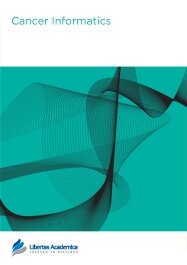

Publication Date: 28 Nov 2010
Type: Methodology
Journal: Cancer Informatics
doi: 10.4137/CIN.S6202

Evidence of an association between survival time and date of birth would suggest an etiologic role for a seasonally variable environmental exposure occurring within a narrow perinatal time period. Risk factors that may exhibit seasonal epidemicity include diet, infectious agents, allergens, and antihistamine use. Typically data has been analyzed by simply categorizing births into months or seasons of the year and performing multiple pairwise comparisons. This paper presents a statistically robust alternative, based upon a trigonometric Cox regression model, to analyze the cyclic nature of birth dates related to patient survival. Disease birth-date results are presented using a sinusoidal plot with peak date(s) of relative risk and a single P value that indicates whether an overall statistically significant seasonal association is present. Advantages of this derivative-free method include ease of use, increased power to detect statistically significant associations, and the ability to avoid arbitrary, subjective demarcation of seasons.
PDF (624.31 KB PDF FORMAT)
RIS citation (ENDNOTE, REFERENCE MANAGER, PROCITE, REFWORKS)
BibTex citation (BIBDESK, LATEX)
XML
PMC HTML
I would like to extend my gratitude for creating the next generation of a scientific journal -- the science journal of tomorrow. The entire process bespoke of exceptional efficiency, celerity, professionalism, competency, and service.

All authors are surveyed after their articles are published. Authors are asked to rate their experience in a variety of areas, and their responses help us to monitor our performance. Presented here are their responses in some key areas. No 'poor' or 'very poor' responses were received; these are represented in the 'other' category.See Our Results
Copyright © 2013 Libertas Academica Ltd (except open access articles and accompanying metadata and supplementary files.)
FacebookGoogle+Twitter
PinterestTumblrYouTube